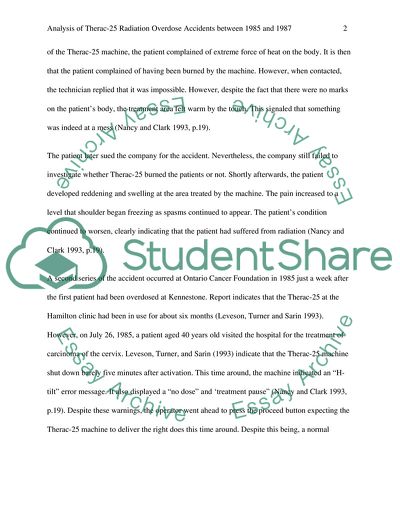Cite this document
(Therac-25 Radiation Overdose Accidents between 1985 and 1987 Essay Example | Topics and Well Written Essays - 2500 words - 1, n.d.)
Therac-25 Radiation Overdose Accidents between 1985 and 1987 Essay Example | Topics and Well Written Essays - 2500 words - 1. https://studentshare.org/technology/1801601-reliability-and-fault-tolerance
Therac-25 Radiation Overdose Accidents between 1985 and 1987 Essay Example | Topics and Well Written Essays - 2500 words - 1. https://studentshare.org/technology/1801601-reliability-and-fault-tolerance
(Therac-25 Radiation Overdose Accidents Between 1985 and 1987 Essay Example | Topics and Well Written Essays - 2500 Words - 1)
Therac-25 Radiation Overdose Accidents Between 1985 and 1987 Essay Example | Topics and Well Written Essays - 2500 Words - 1. https://studentshare.org/technology/1801601-reliability-and-fault-tolerance.
Therac-25 Radiation Overdose Accidents Between 1985 and 1987 Essay Example | Topics and Well Written Essays - 2500 Words - 1. https://studentshare.org/technology/1801601-reliability-and-fault-tolerance.
“Therac-25 Radiation Overdose Accidents Between 1985 and 1987 Essay Example | Topics and Well Written Essays - 2500 Words - 1”. https://studentshare.org/technology/1801601-reliability-and-fault-tolerance.


